When people ask how to attract wildlife to their yard we have two simple answers: plant native plants and make a pond! Even a small pond will attract wildlife of all sorts to your yard from birds to dragonflies to frogs. And it’s surprisingly easy to do! All you need is a shovel, a short list of supplies, and a day or two of hard work. You’ll have tadpoles in no time! Ready? Here’s how to make a pond for wildlife!

What Makes it a Pond for Wildlife
We made our first wildlife pond more than 6 years ago and have made a few mistakes and learned a few things along the way. We’ve also been able to observe how wildlife like to use it. Here are what we consider the key elements you need to make a good pond for wildlife.
Key Elements of a Wildlife Pond
- Variety. The goal for any wildlife pond is wildlife diversity so you should offer a variety of habitats within your habitat! This includes a variety of depths, edgings, substrates in the bottom, perches & sunning spots, plants in and around the pond, and types of shelter (logs, rocks etc) nearby.
- A beach. Animals need an easy way in and out of the pond. You don’t want your pond to become a death trap for small animals! A sloping entry leading to a shallow end is the ideal arrangement. I would consider this the most important element in designing any pond for wildlife. Your beach could be fine gravel, sand, mud, sod, or some of each. We used tiny decorative river pebbles to line our beach so they wouldn’t erode into the pond during heavy rains, though now I’m considering adding a mud bank to assist in the life cycle of insects like dragonflies. Animals from raccoons to screech owls will use the beach to drink and frogs love to sit on the beach partially out the water.
- A shallow end. The shallow end of a pond (just 2 to 6 inches deep) is where you’ll see the most activity. It’s great for observing the creatures that live there. We placed a layer of river pebbles (about 1 to 2 inches diameter) across the bottom of our shallow end to create spaces for little creatures to live in. Tadpoles love to hang out in the shallow end and birds enjoy taking baths in it.
- A deep end. There are a few practical reasons to have a deeper end in your pond. If you have a pump like we do then you need enough depth to keep it under water (but you don’t have to have a pump, see considerations in the next section.) If you live somewhere with cold winters, making your deep end about 2-3 feet deep will help keep the bottom from freezing and protect frogs & invertebrates.
- Muck. You’ll need some substrate in the bottom of your pond to shelter invertebrates & amphibians. Sand, silt, pebbles and other substrates will help many species complete their life cycles. Don’t be afraid to let some plant matter accumulate in the bottom.
- Native plants. Plant native water plants in your pond to aerate the water and give amphibians and invertebrates a place to shelter & lay eggs. Surface plants provide a place to rest, ways to get in and out, and some shade to prevent algae growth. Plants around the pond provide cover for animals to come and go and places to shelter in the winter. Some non-native pond plants can be extremely aggressive and quickly overwhelm your pond (and accidentally spread to nearby waterways) so stick with native if at all possible!
- Shelter around the pond. plants (above) provide important shelter around the pond. Large rocks with spaces in between are popular shelter for frogs chipmunks, snakes, and insects. A pile of logs is a great damp place for insects and for amphibians to shelter out of water. Stick piles, compost piles, whatever; get creative and make safe spaces for life around the pond.
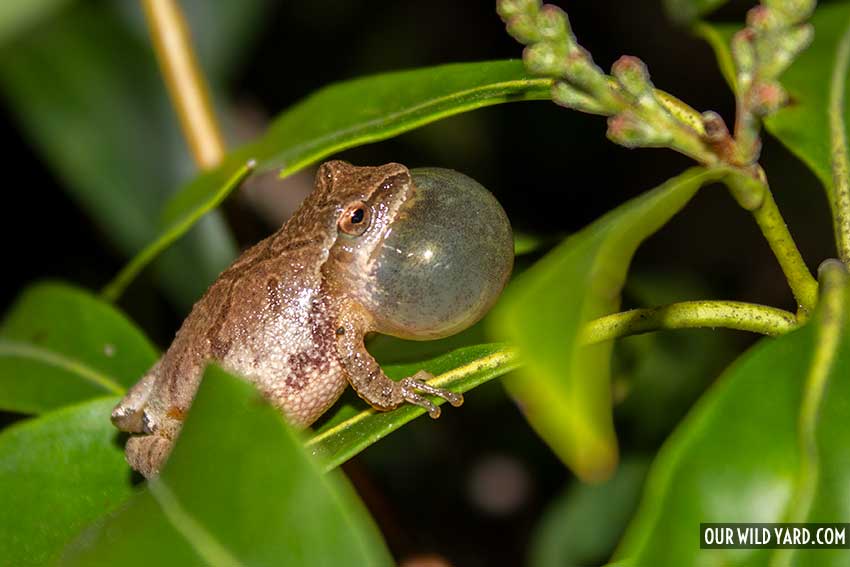
Things to Consider Before Making a Pond for Wildlife
Location
You should place your pond any place that works for you but keep in mind some of the pros and cons of sun vs shade. If you place it in full sun you may find that algae grows more quickly and flat stones around the pond may become too hot for amphibians to cross or sun on. Conversely, if you put it in the shade then it’s likely to be under vegetation and you’ll probably collect leaves and plant matter. Some leaves are fine and can create a nice hiding layer at the bottom of a pond. But eventually if you get too much organic build up then the decomposition can consume oxygen. In this case you may need to do a partial clean out every 5-10 yrs. Scooping off some leaves as they fall can prevent this. I think the perfect placement is partial shade.
Size
Any size pond will attract wildlife. You can make it as big or as small as you like. Our small pond (made with a pre-formed pond shell) is only 2 feet by 4 feet and a couple frogs and salamanders like to hang out in it. Our slightly bigger pond (made with a flexible pond liner) is about 8 feet by 4 feet and is the perfect size for amphibians to breed in and where most of our wildlife activity occurs. I consider this the sweet spot for small ponds. Of course you can go as big as you like if you have the room!
Pre-formed Pond vs a Liner
A pre-formed pond liner (or pond shell) may seem like a quick, easy way to make a pond, but you still have to set it into the ground to be accessible for wildlife, which requires as much digging as the liner method. The upsides are that 1) you’ll probably never get a puncture or leak and 2) they usually have built-in shelves for marginal water plants in pots. The main downside is that they never have a sloped entry, which makes the pond far less accessible to wildlife and could even cause animals to get trapped when the water level drops. If you use one of these, make sure you provide sticks or edge-lapping plants to form a ramp.
Using a flexible pond liner is cheaper and offers you more room for creativity. Plus you can make a much larger pond if you wish. It’s simply a flexible sheet of PVC or EPDM (a synthetic rubber) that you lay into a hole you’ve dug. They’re available from the big home improvement stores. The only potential downside is that you could get a leak if something punctures it. But we’ve had ours for almost 7 years with no issues. The upside is you can design a super wildlife friendly pond exactly to your liking which, to me, makes this method the obvious choice.
Oxygen: Should I use a Pump/ Filter or Aerator?
A lot of pond life requires oxygen in the water to survive. Therefore you’ll need a certain level of aeration (aka oxygenation). This can be supplied in several ways. You can have underwater plants which emit oxygen as they “breathe”, you can place an aerator in the pond which is just air being pumped down a tube and released in a stream of bubbles from the bottom, or you can put in a waterfall or fountain that causes droplets of water to fall through the air and splash into the pond, creating air bubbles.
We went for the waterfall because it sounds nice, looks natural, and many creatures love to sit/bathe/drink on the flat stone at the top of the waterfall. There are a couple downsides to a waterfall. The main one is that a pump requires a filter in the water and this can trap and kill loads of invertebrates. Plus the pump makes a constant noise underwater, which sounds really annoying to me when I hear it on a GoPro. I’m not sure exactly how the frogs feel about it. Keep in mind you don’t have to have a pump/filter to keep your pond clean, and I would probably try one without a pump next time with more focus on underwater plants.
Wildlife Pond Edging Ideas
Variety is the key when it comes to wildlife pond edging ideas. On ours we have flat stones along the front where larger animals come to drink, frogs like to sun, and where we can kneel down and peek at the critters. Along the beach we have small gravel to create a ramp. Around the back we use large stones with spaces in between for animals to shelter in. Near the waterfall, these stones grow moss which the frogs love to sit on. You could of course grow grass right up to the edge of the pond, which we do in our front yard, and we let it grow long to provide a lot of cover. Keep in mind if you mow up to the edge you’ll get a lot of lawn clippings in the water. If you’re looking for something a little tidier and formal you could use pavers or bricks but once you go down this path you’re starting to leave the realm of wildlife pond and heading into decorative pond.
Fish or No Fish?
You may be tempted to put koi fish in your pond. Resist! Koi eat everything, plant, animal, invertebrates, you name it. Their waste (and excess fish food) can quickly overload a pond with nutrients leading to algae growth. Koi are not native to the U.S. (they are of Chinese and Japanese origin) and the goal of a wildlife pond is to support local wildlife! So can I grab some native fish out of a creek nearby and drop them in? In my opinion that’s not a great idea either. You may transmit diseases, or place a fish into an environment it’s not suited to. Your pond will populate with creatures all by itself. Let nature do its thing!
How Will Wildlife Find my Pond?
As mentioned above, there is no stocking required! Wildlife of all sorts will find your pond in no time! You’ll be amazed the first day you see snails in your pond. How’d they get there? I have no idea? Invertebrates of all kinds will arrive on their own and start their life cycles, providing important food up the food chain. Birds will find it quickly for bathing and drinking. Frogs and salamanders will colonize your pond surprisingly quickly! Building your pond in early spring is the perfect time as frogs soon be moving about in search of pools to lay eggs in. Larger animals will start to use your pond as a waterhole. Snakes may come to hunt. We have a red-shouldered hawk who likes to perch above our pond and search for frogs. We had a pair of young screech owls stand in the shallow end to drink! Raccoons love to get in the water and grope around for a meal.
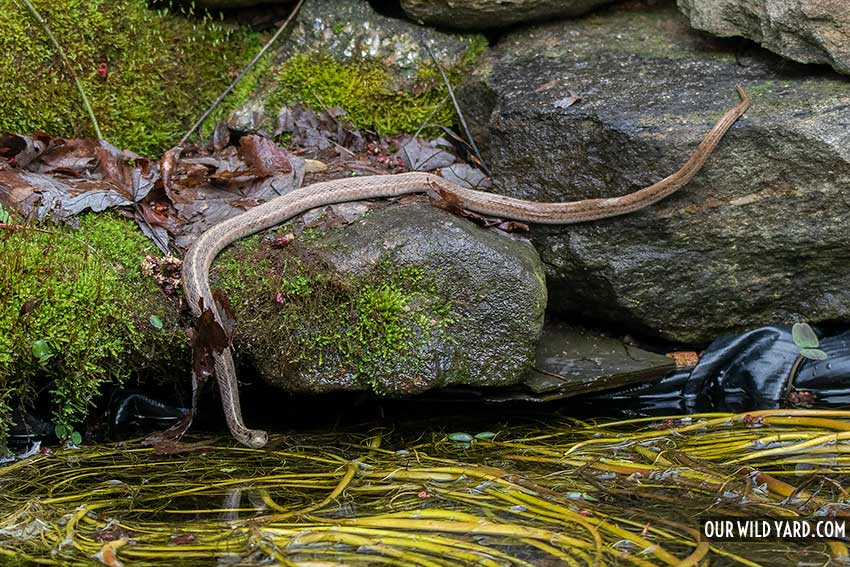
Supplies to Make a Wildlife Pond
Here area the basic supplies we used to build our pond for wildlife:
- Pond liner (PVC or EPDM sheet available at home improvement stores)
- Shovel
- Flat stones to line the edge of the pond. Larger stones for shelter and waterfall.
- Decorative river pebbles of various sizes for the beach and shallow end.
- Sand for smoothing beneath the liner (optional)
- Water plants to provide shelter for frog eggs and tadpoles and help oxygenate the water. Try to choose native pond plants if you can find them!
- Pump filter kit for waterfall, or an aerator if you prefer. (But you don’t have to use these if you have underwater plants providing oxygen.)
- Outdoor extension cord to plug in the pump (unless you get a solar pump/aerator!)
How to Make a Pond for Wildlife (step by step)
Here’s how we built our pond for wildlife with a flexible pond liner and a pump/filter combo to supply a waterfall. It’s about 8 feet long by 4 feet wide by 2.5 feet deep in the deep end..
1) Choose a location for your wildlife pond
First, choose the location for your new pond and use a rope or string to map the shape of it. It can be any shape you want, but a simple oval or a kidney bean shape both work well.
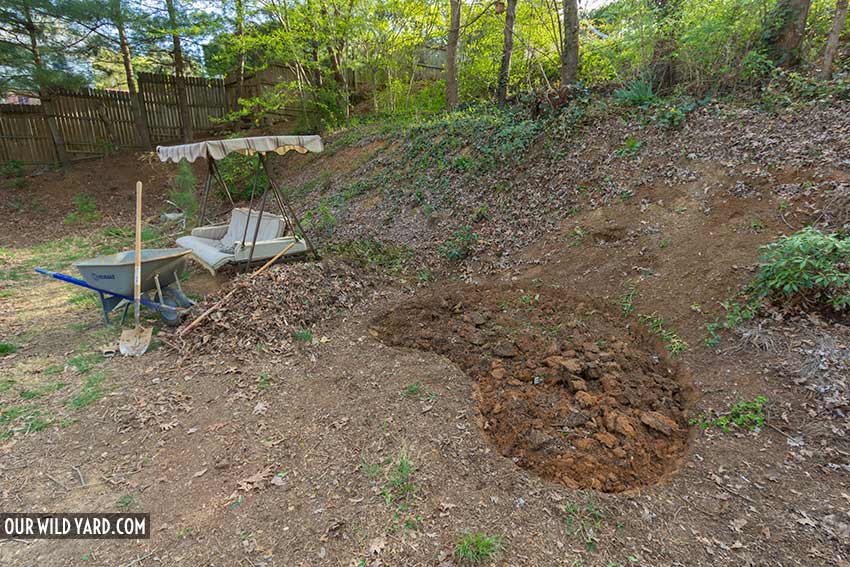
2) Dig!
Start digging! Keep in mind that if you use a pump filter kit it needs to be completely under water, so the deep end needs to be deep enough to house it. Our pond’s deep end is about two and a half feet deep.
3) Create different depths for different types of wildlife
Since you are building a pond for wildlife, try to give it both a deep end and a shallow end with a sloped entry. The deep end is good for salamanders and frogs to swim and hide in, and the shallow end provides a perfect spot for drinking and bathing. Birds and squirrels love it!
Our frogs also love the shallow water end of the small pond, we find them every morning sitting half in and half out of the water!
4) Create a beach for easy access into your wildlife pond
Some animals need to be able to get in and out safely to avoid drowning. Make this easy for them by creating a “beach” in the shallow end. We did this with a sloped ramp of small pebbles leading in. If your pond doesn’t have a beach in it consider buying an animal pool escape ramp so your critters can use it as a raft and jump out of the pond safely. You could also use a log!
5) Pour a layer of sand
Once you have the desired shape and depth, layer a couple inches of sand across the bottom. This will smooth the bottom of the pond and will prevent any possible punctures in the liner from sharp stones or roots. You can get your sand at any home improvement store. An alternative is to use old carpet scraps!
6) Install the pond liner
The liner has to cover the entire pond plus at least a foot to 18 inches of overhang around the edges. (As an alternative, if you want a small wildlife pond, you can use a pre-formed plastic pond liner.)
7 – Fill the wildlife pond with water
Now is a good time to make sure the sides of your pond are level. Add or subtract soil as necessary around the edges.
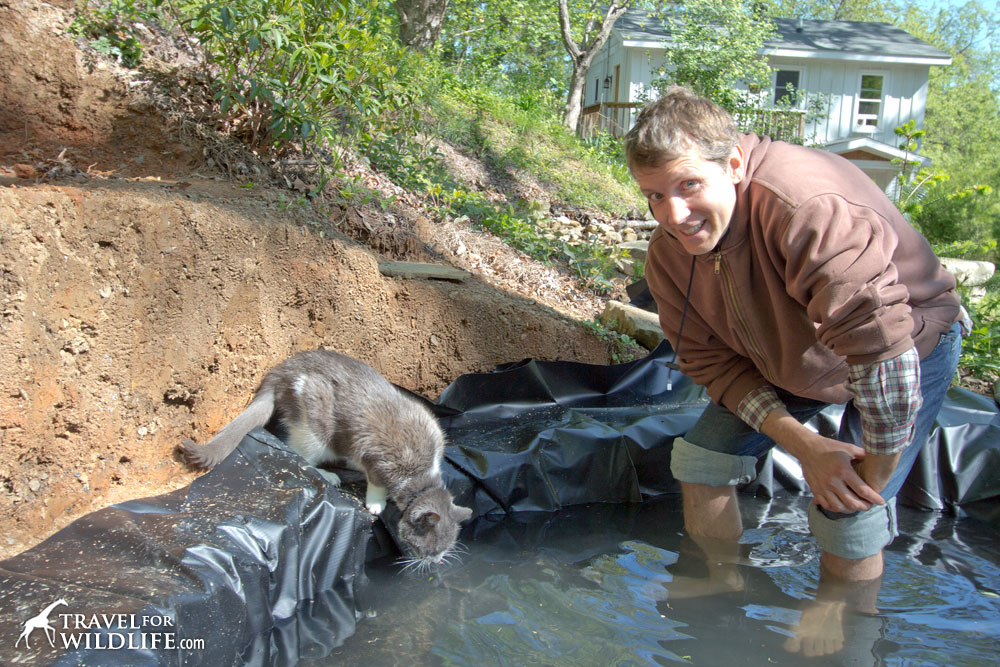
8) Secure the pond liner
Place stones around the liner to secure it. We mixed it up a little bit, with large rocks, and small rocks. This creates a few holes that have become a favorite for chipmunks, frogs, and toads. Fill the pond with water and let it sit overnight to test for possible punctures. If the pond doesn’t leak, you can finish building it!
At first I made a smaller top pond and pumped water up to it to feed the waterfall but it proved problematic and the waterfall was leaky. Eventually I filled it with soil and plants and then ran the pump hose straight to a bigger flat rock on top of the waterfall and let the water from the pump hose run out across it.
9) Place the river pebbles on the ramp to create a beach
This is a very important step in creating a pond for wildlife. Small animals need to be able to enter and exit the pond safely. The last thing you want it to find a dead animal just because it couldn’t get out. We use a fine gravel beach and some plants to create natural ramps for easy access/exit.
10) Installing the pump filter kit
Install the pump filter kit in the deep end and run the tube to either a pond spitter (like our frog) or a waterfall, or just let it pump straight to a fountain above the pump. As mentioned above, keep in mind that a filter can kill lots of invertebrates so you could also consider using underwater plants to aerate your pond.
11) Landscaping your wildlife pond
Finish the landscaping by placing native water plants (to create shelter for the critters), a pot with bog plants so dragonflies have a resting place and plant a few bushes close to the pond so birds have a perch.
Congratulations! You have an all-purpose wildlife service station in your backyard! Let us know what kind of animals you’ve seen in your backyard pond!
Our Pond for Wildlife through the years
2014
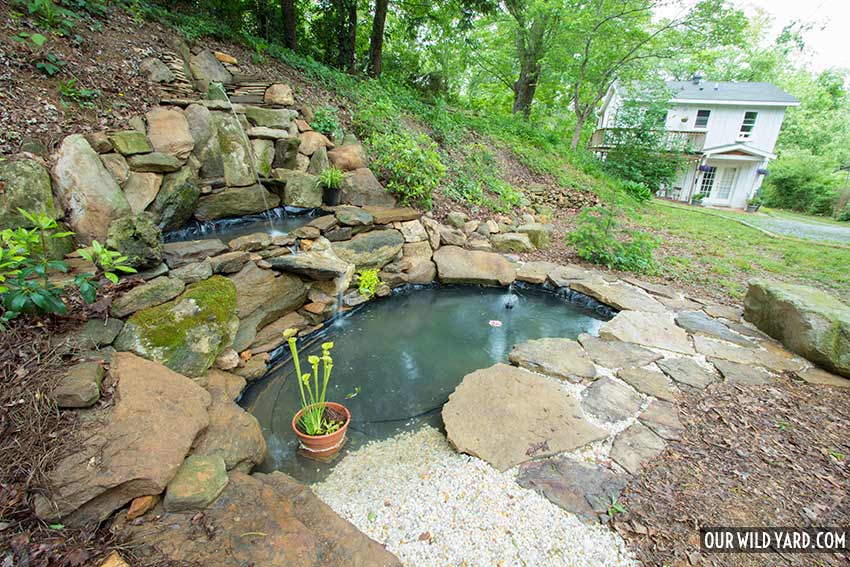


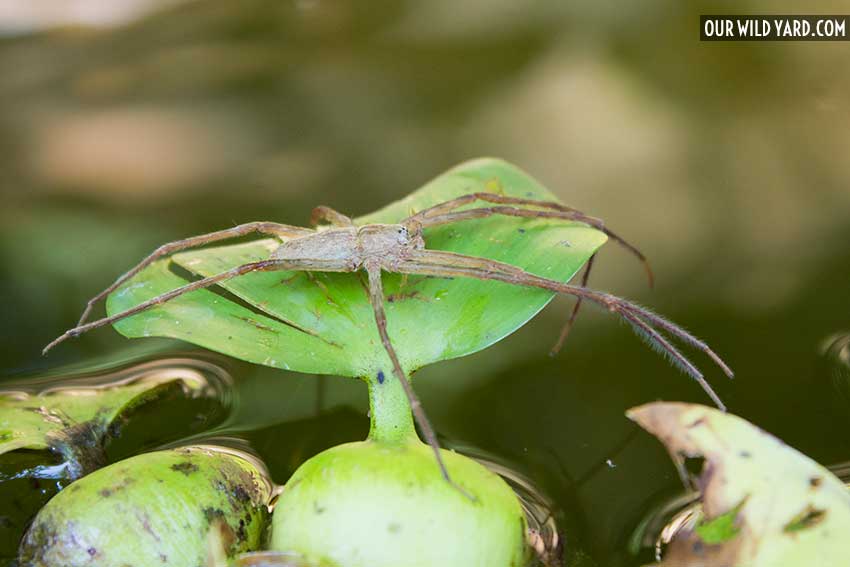



2015


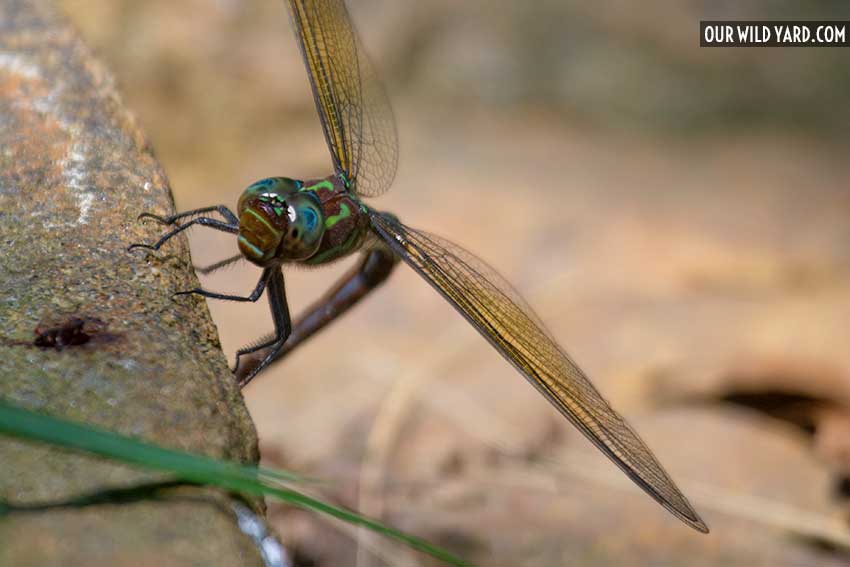
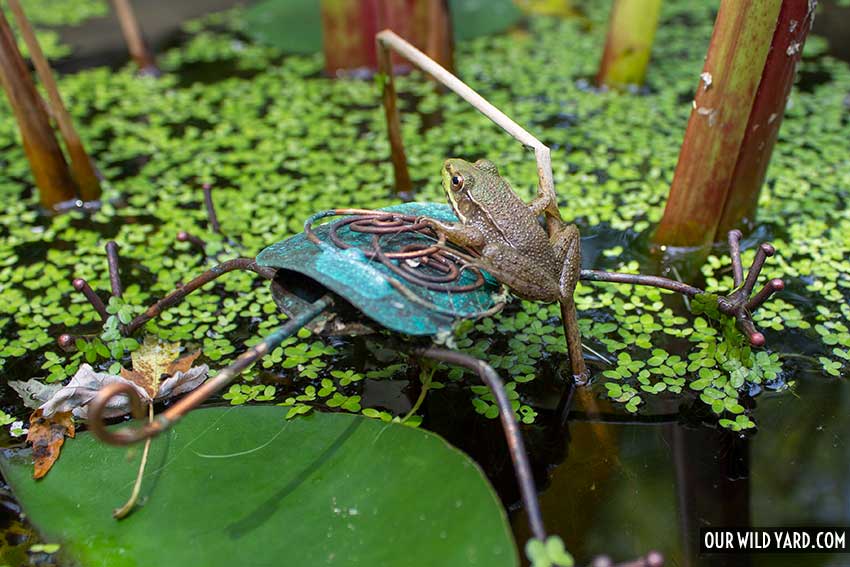
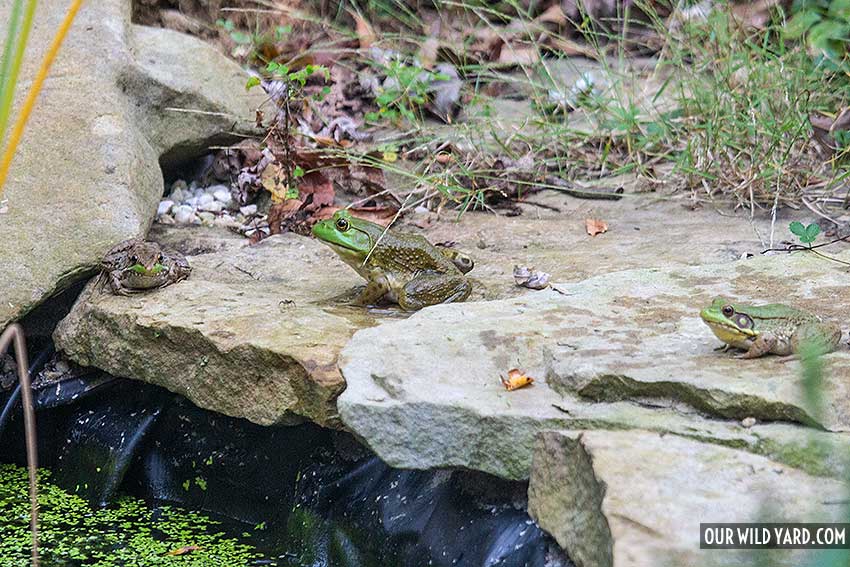
2016

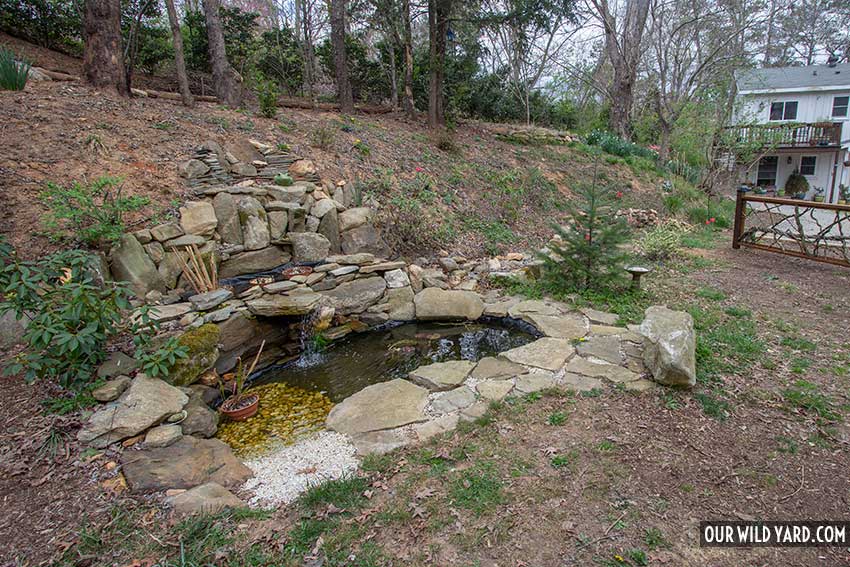


2017


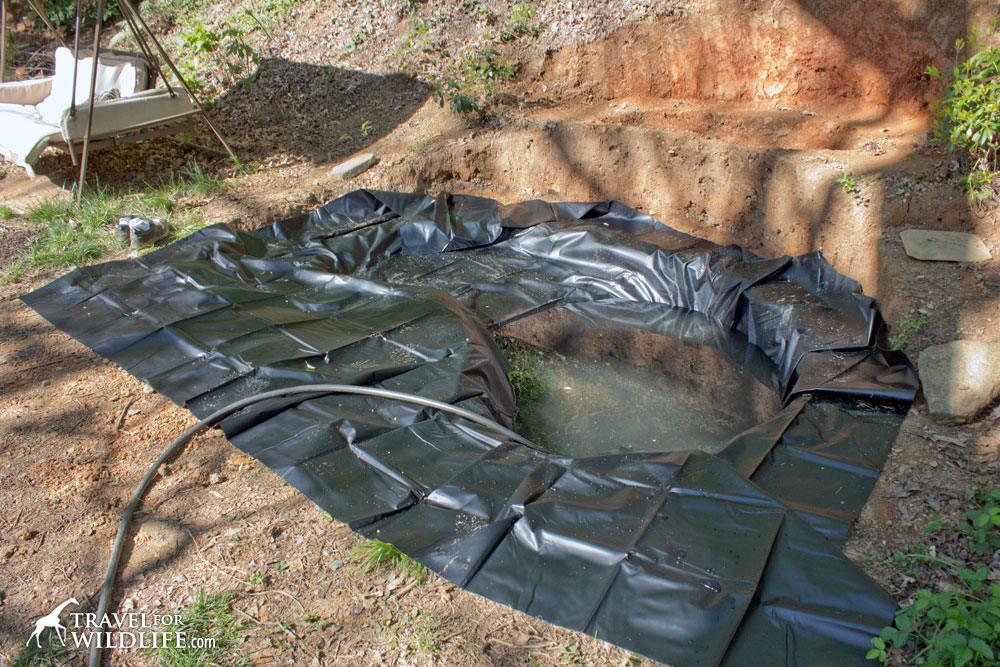
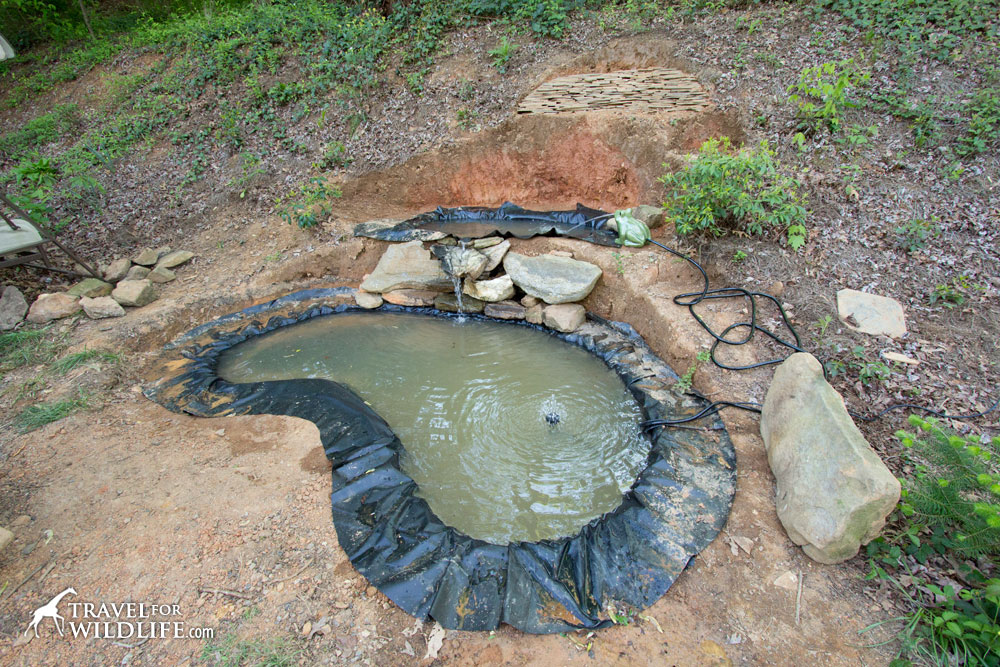
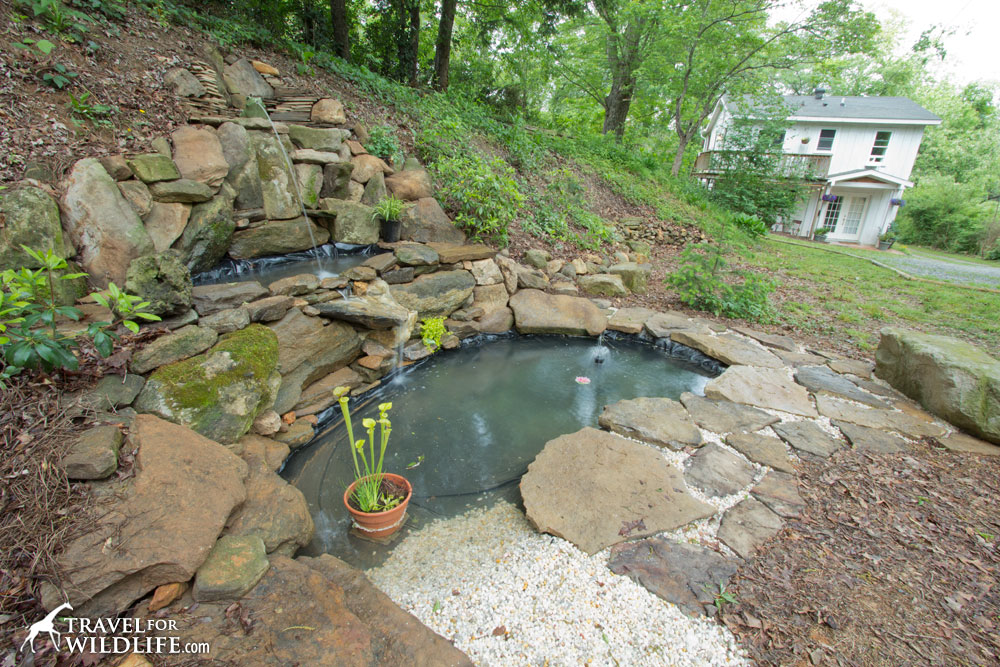
Hi there! What a beautiful pond! And such an informative and inspiring article. Thank you so much. We live in Washington State in the shrub-steppe dry lands. Will be investigating to see what native water plants might work here. When we finish the job, I’ll be happy to send photos. I love that you built such a haven for so many creatures!
Hey there! Thanks for the information. I am closing on a house this week with an in-ground shallow kiddy pool ( about 10 ft by by 6 ft by 4 ft). I was hoping to turn this into a wildlife pond. The previous owners had is as a small pond with a waterfall in it. I would like to add vegetation to encourage wildlife. If you have any tips about plants for a concrete pool, I would appreciate it.
Hi Libby, that sounds great! A pool with a concrete lining can still provide for a lot of life. If you plant water plants in heavy pots below the surface, they can provide oxygen and surfaces for frogs and insects to lay eggs. Vegetation will undoubtedly accumulate in the bottom and provide shelter for other pond creatures. My only suggestion would be to create a “shallow end” with a pile of stone or gravel, or some type of ramp so that creatures can easily and enter and escape without drowning and will provide a comfortable area for birds to splash. Best of luck! -Hal